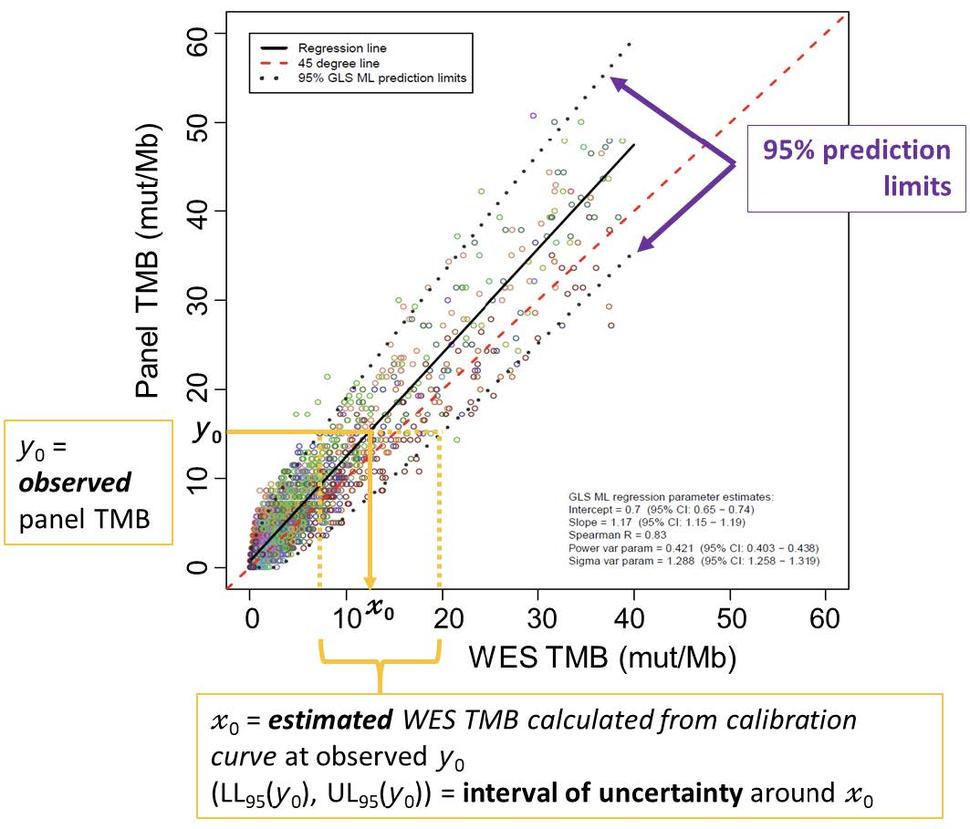FOCR/NCI TMB Calibration Tool: tmbLab
Lisa McShane, Laura Yee, and Qian Xie
This package generates and applies a calibration model as described in phase 2 of the Friends of Cancer Research (FOCR) tumor mutational burden (TMB) harmonization project. The software estimates a calibration curve with corresponding prediction limits to quantify the average relationship between WES and panel TMB assay values as well as variability around that curve. Intervals of uncertainty are also provided to accompany the corresponding WES-calibrated TMB values.
Download the software
Vignettes
tmbLab Vignettes
Support
